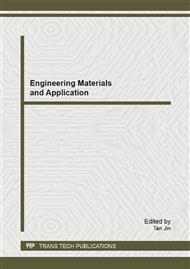p.29
p.33
p.38
p.42
p.49
p.54
p.60
p.67
p.73
In Vitro Drug Release and Hemocompatibility of Biodegradable Plga/Peg Coated Paclitaxel-Eluting Stents
Abstract:
The Paclitaxel-eluting stents (PTX) with biodegradable copolymer coating were studied in investigations. The polymer blend composition of PLGA (polylactic acid-co-glycolic acid) and PEG (poly ethylene glycol) have been applied as drug carrier and fabricated on the surface of 316L stainless steel stents by ultrasonic atomization spraying method. Were explored three doses: low-dose (~80μg per stent, 10 wt%), moderate-dose (~150μg per stent , 20 wt%), and high-dose (~220μg per stent , 30 wt%). The weight ratio of Paclitaxel to PLGA/PEG blends was 10:90, 20:80, and 30:70. Pre- and post-expansion surface morphologies of the Paclitaxel-eluting copolymer coating stents were examined by scanning electron microscopy (SEM). The quantitative analysis of Paclitaxel release in vitro and hemocompatibility by hemolysis ratio and dynamic clotting time measurement also were investigated.
Info:
Periodical:
Pages:
49-53
Citation:
Online since:
January 2013
Authors:
Keywords:
Price:
Сopyright:
© 2013 Trans Tech Publications Ltd. All Rights Reserved
Share:
Citation:


